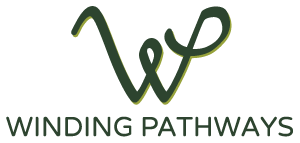by Winding Pathways | May 22, 2025 | Ruminations
Post Three – Three to Eight Weeks and Beyond
(Think Buzz Lightyear – All is Possible)
Mummy was Right!
Here I am! Starting to feel better. Thinking I can do things. And I can. However, as friends near and far remind me, “Take things easily.”
As kids, when we’d get up in the morning feeling kind of crummy, Mum always said, “Wash up, get dressed, have breakfast, make your bed. Then, we will decide if you need to stay home.” Most of the time we were good to go.
I found the same with this period of post-surgery. This link has fabulous insights on post surgery care.
Below is a rhythm I found helpful.
Usually, some movement, healthy food, and getting dressed did the trick. My body is stiff, I feel sweaty from hours in bed, I’m hungry and sometimes ‘hangry’. I started off doing the “baby” leg exercises important following back surgery. Then, I’d get the other tasks done. Doing these few routine tasks settled me in. Adding any needed OTC medication helped. Then, rest. Yep. Back to lying down but not in bed. That is too easy. And, I want bed to be for sleep not slumming. So, I kept items near the couch and would lie down for about 20 minutes. Alternating ice and heat on various complaining body parts helped. Then, up to do a few simple activities.
After a time, I incorporated light house work like dishes, tidying up spaces, computer work to keep in touch and pay bills, walking the driveway horseshoe loop for exercise. Always mindful to avoid bending, twisting, over-reaching. The vertebrae and hardware need to fuse.
Remember to send TY notes to folks. I would do a few each day. I kept a list and postcards pre-addressed and stamped to send. And, found the Jacquie Lawson ecards helpful to send to people who unexpectedly helped.
Connect with people a few times a week to lessen feelings of isolation. I’d ask people close by to help arrange visits. From a distance, I simply sent periodic, and sometimes idiotic, emails to people. Usually, I got idiotic replies back that made me smile and laugh.
Here is one from another childhood friend: “Thanks for the update–keep ’em coming. I was going to ask how things were going and I’m glad you seem to be hanging in. HMMM perhaps coming up with strategies to complete every day activities will be good for your brain! When my yoga teacher introduces a new pose that sounds really wonky, I call it “Yoga for Alzheimers prevention.””
Moving
Walk on safe surfaces several times a day. On warm days, I could walk the horseshoe drive a few times each day. Then, I’d increase the distances. Some days, I simply did less. The upward trajectory of movement and health is the goal. Physical therapy may not start for several more weeks. I did the simple but important leg exercises as per the medical booklet.
My walking mantra is: Heel-toe. Low belly up. Shoulders back. Chin parallel to the walking surface. Use your peripheral vision. Cane as a guide and as per an Occupational Therapy friend, Increase your Stride.
The six-week checkup was positive, and the reminder to limit bending/twisting was good. Lifting about 15 pounds is OK. One and a half gallons of milk is about 15 pounds. I still do morning preparation and chores, then rest. After about 6.5 weeks, I successfully put on compression socks by myself. So, Rich’s morning task is about done.
The cane for going out and about is helpful. Around the house, I manage all right. And, reachers! Keep them! So, I bought several.
None Of Us Is As Smart As All Of Us
Years ago, when trying to figure out something, a Kansas colleague, Lila King, stated, “None of us is as smart as all of us.” By golly, we figured out a sticky problem. That mantra has proved helpful many times since. How do I get things done? Ask! People want to help.
Continuing to have and accept help is important in these weeks and beyond. I found that I tired easily, so I rested. The prioritized list of “things to do that are helpful” made it easy for friends and family to visit and pitch in, which they all did graciously. And my saying, “Yes, thank you!” helped all around. What are some of these tasks?
Having family come help healed more than just the tasks. Great company and was reassuring.
Friends and family measured the space for new shower curtains, researched the best sites to order from, and helped install. Hotel-quality and style make freshening shower curtains easier without awkwardly removing the rod.
The family helped wash the insides of windows where the painter had inadvertently left smudges and install screens for the season.
Our daughter pulled the paint cans from storage so the painter could finish one small project. Our son and son-in-law hung pictures and screens, split wood, and were attentive od my getting into and out of the car. They all did many small deeds of kindness. Rich was close by and helpful over the many weeks.
After six weeks, the toenails were long, so our daughter suggested a pedicure so that a professional could trim them. How lovely to have someone nurture the feet. I didn’t think about that as an option. None of us is as smart as all of us.
An East Coast friend mentioned ways to care for the surgical scars to loosen up tissue and avoid binding problems in the future. None of us is as smart as all of us.
When I mentioned that the doctor visit showed high blood pressure, a friend said, “Wait five minutes and do again.” Yes, of course. When we first come to a visit we have been walking, are nervous and breathing shallowly. Deep breaths and resting a few minutes reveals normal blood pressure. Why didn’t the nurse do this? Hmmmm. None of us is as smart as all of us.
Soup Cubes to the rescue! Again, from our daughter, I learned about these handy ways to freeze food, pop out the back, place in labeled freezer zip-locks, label, and pull out when we needed a quick meal. This is helpful now that the MealTrain is done. None of us is as smart as all of us.
So many more acts of kindness, generously shared.
Time for Pleasure
Not everything was work. A puzzle kept us entertained and our daughter is so strategic on putting it together. While I rested, family took walks on the many trails that now link the area. They met with long-time friends and met new people. Coffee shops rock and are new to them, so Cedar Rapids has changed positively in that regard. Nice meals out. Chats in the living room and on the back deck in nice weather.
Giving Back
What Can We Do When We Feel We Can Do So Little? Healing completely takes time. Many people have helped over the weeks. And continue to do so. At first I thought I could not do much to help. What could I do with such limitations? Well, it turns out to be quite a bit.
I asked our daughter if she would share her music. She brought her accordion along and played songs for a friend who had recently been injured. We sang – sort of – and laughed. A hospice nurse colleague asked me to work with a patient and family with healing energy. An honor, indeed. A labyrinth colleague and friend accidentally double-scheduled a time. She asked if I could do the one-hour Veriditas Friday ZOOM hand-held finger labyrinth walk. Veriditas has offered this activity EVERY Friday since the Pandemic began in the US in earnest in March 2020. My theme was easy: “What Can We Do When We Feel We Can Do So Little?” Four continents were represented as over 50 people worldwide zoomed in and shared their perspectives. Another honor to give back. And, so it goes as we receive so we share – The Ketchuan philosophy. From you I receive to you I give. Together we share and from this we live. A Unitarian Universalist hymn. Inclusivity.
Well, moving on here. As I wrote in the beginning, take whatever is useful and leave the rest behind. These were simply my observations of recovery which will take about a year to be fully realized.
by Winding Pathways | May 15, 2025 | Preparedness, Ruminations
*Apologies to Ben Franklin*
It’s funny how quotes get attributed to people. Franklin might not have actually said the quote above, but he did have the right idea with his quote: in the 1737 Poor Richard’s Almanack: “A penny saved is two pence clear.” When you save something today, it likely will grow in worth over time.
We are on the far side of age 75 and enjoying financial security that has resulted from a lifetime of careful spending, good advice, and a bit of luck. A penny saved here and there added up.
We’re not financial experts so this is just how a lifetime of money management enabled us to emerge into good money health despite years of lean income.
Over many years of talking with people facing financial stress we often hear them say, “I need to find a job that pays better.” Well, you might not need to do that. You simply need to spend less and perhaps live in a more affordable geographic location. Dr. Laurie Santos, professor at Yale University, hosts a series on the Science of Well Being. She also hosts a six-week course, the Science of Well-Being for Teens. Participants look closely at their lifestyles and where they spend time and money that drain them, causing them to think they need more. Often it is not true. It’s a great course to take online.
Our Background
We worked in the nonprofit sector, which provided slim salaries and sparse benefits. We liked what we did so never felt compelled to change jobs for better pay. Rather than seek higher pay we used what money we had efficiently.
Financial Philosophy
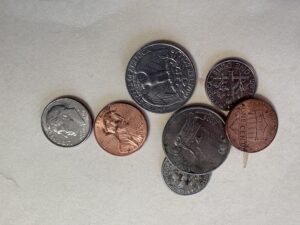
A Penny Saved is a Penny Earned
Our basic financial philosophy is that however much money a person earns, if he/she spends a little less and consistently invests the difference, financial health increases. Of course, that was partly back in the day when financial institutions gave better interest return on money customers deposited.
Decades Long Strategy
Here’s what we’ve done for over a half century to be financially secure.
- Avoided compulsive, ego spending. Keeping up with the Joneses costs money.
- Developed a long-term relationship with our bank and brokerage as partners. Their advice is free.
- Avoided paying rent and borrowing money. Yup, we drove old cars we could pay cash for and regularly put money in the bank. This earned us interest and avoided loan interest. Then, when we needed to buy a car, we withdrew money and paid cash. We rented apartments briefly but invested in a house purchase. Because we live frugally, we were able to pay off a mortgage early. Now our housing costs are utilities, taxes, and maintenance. No monthly rent or mortgage! It’s a pay-as-we-go philosophy. Granted, we did not “enjoy” some of the exotic trips or coolest stuff and we are better off for it.
- Avoided voluntary taxes. People complain they don’t want to pay taxes. (Benefits exist to paying legitimate taxes) Then, what do they do? Some buy tobacco, alcohol, and gamble.
By doing so, they pay self-imposed high taxes and often end up with health issues. We’ve never smoked, don’t gamble, and enjoy a beer or a sip of wine occasionally. A pack of cigarettes in Iowa costs about $9. If we each smoked two packs a day, our daily cost would be $36. That’s over $13,000 a year. If we’d done this for our 50-year marriage we’d have spent far more on tobacco than to buy our home.
- Embraced life cycle cost. For example, it’s common for the least expensive refrigerator to consume the most electricity. Life cycle cost means figuring out what an object will cost during its likely lifespan. Usually paying slightly more upfront for a well-made, efficient device saves chunks of money over time. Energy efficiency saves money! BTW, ditch the inefficient refrigerator or freezer you’ve held on to. Recycle it. Likely you don’t need all the extra stored food. Your electric bill will go down and you have more space in your home.
- Embraced inexpensive recreation. People often carefully calculate the cost for business and home functional items, then spend ridiculously on recreation.
Hobbies
Rich’s hobbies are reading (library books are free), walking, birding, and fishing. He also scrounges and crafts items like bird feeders.
Fishing’s a good example. It can be expensive but doesn’t have to be. A cheap rod and reel costs about 30 bucks and won’t last long. A better one costs about $100 and is durable and efficient, but the very best is around $500. Sticking with the $100 model is the most cost efficient…..and he catches fish from an ancient rowboat purchased at a garage sale. In contrast, an expensive powerboat and electronics need insurance, storage, maintenance, and fuel. Not needed for catching fish.
- We love gardening, which helps lower food costs. Even a small patio can support vegetables you may enjoy.
- Avoid being nickel and dimed to death. It sounds cheap. Only eight dollars a month for a streaming service. $96 a year. Multiply that by six streaming services and that $96 a month costs close to $576 a year. All sorts of other things that seem cheap per month put a constant drain on finances. A few bucks here. A few bucks there. They add up!
- Use our credit card carefully and always pay off the balance on time to avoid interest costs.
Final Words
The upshot is, most people do NOT need to earn more money, they need to learn to use what they have wisely.
We spend carefully yet live richly and have avoided the terror of a heavy debt burden. Our financial strategy has led us in a good direction and we believe it may help others to achieve the same result.
by Marion Patterson | May 8, 2025 | Ruminations
Post Two Post-surgery time – Days 1 to 21
Go Slow Now to Go Fast Later
Go to this link for valuable information.
Being on high-level pain medications is interesting. In the hospital recovery, I remember drowsily being aware of voices coming and going. On the post-op floor staff were excellent. Attentive. Not too chatty. But I was chatty. They knocked when entering. Staff identified themselves. Two visitors did not. So, I simply asked who they were. It’s a good habit for everyone who enters to initiate: “Hello, I am ____. I am here to___.” Rich stayed close by.
Our son came in about day ten. A nurse had pointed out that people tend to rush in to help with surgery. When in truth, a person rests/sleeps a lot! So, help later, when others have resumed their lives is often more helpful. That proved to be true for us.
At first, I slept/rested a lot, and was foggy at best. Yet, I managed to periodically get up and trundle around the single-floor home of friends who had us stay. I thought I could do more than was actually wise to do.
Years ago, I was part of an international labyrinth team planning an international virtual facilitator workshop. A wise colleague from Texas reminded us to go slow in planning now to go fast later. Great advise following surgery. And, other situations, too.
Just be patient. Even though I am in fairly good physical shape, I found that as I weaned off medications, body parts that I had forgotten about complained. This is because I was holding my body more tensely and moving irregularly. The HeartMath techniques I have learned and practiced helped. This thoughtful pause of breathing and appreciation helped me center.
Several times a day take “One Good Minute” to breathe deeply. Name and feel what you appreciate. As is appropriate check with your doctor and arrange for a licensed lymph drainage specialist to drain off excess fluids. I learned and practiced lymph drainage which helped in between sessions.
Moving Around:
Face What is Ahead of You
I am always surprised at how often I face one way and start to overreach or twist to get something not directly in front of me. As Doctor Schopick, the neurosurgeon, pointed out, “Face What You Are Doing!“ and “What is Ahead of You.” This is good practice, both literally and figuratively. Denial usually creates more problems than facing something straight on.
In this case, Nose follows Toes. Walk heel-toe. Shoulders back. Chin up. Draw the low belly up. Use a walker or cane as a guide. Use your peripheral vision to see. Remember, these are “code talk” for “Stop shuffling!” “Stop slouching!” “Suck in your gut!” “Release the death grip on the walker/cane!”
Use the stairs’ railing as a guide instead of pulling up or pushing down. I found a comfortable way to descend stairs first thing in the morning when I was stiff was to step down sideways, gripping like the Ninja Warriors on TV: one hand over/one hand under.
Other Thoughts
Elevate swollen areas. Long ago, injuries on my left leg created issues with swelling on the ankle and foot. I iced as appropriate and later alternated with heat. Lymph drainage by professionals relieved swelling in areas beyond the surgical sites. I checked with professionals first.
Helpers: Keep the house tidy. This promotes safety and helps the recovering person mentally. I found it helpful to make lists of what I would like done and ask helpers to do a few at a time.
Rest: do one task and lie down. I learned to recognize when I was tired. i.e., Sigh, short-tempered. Achy. Slouching. I would lie down, even when I was sick of lying down.
Reachers: I placed in several locations around the house. Again, a learning process. when an object fell, I breathed and got the Reacher.
Clothing: As my body adjusted to post-surgery recovery, I found that I alternated between being cold and then warm. Easy to take off and put on tops and layers like vests helped. High-waisted, wide-legged pants proved easy to use. The low front and back incisions were exactly where the underpants’ bands rested. Owie! So, a friend suggested, “Go Commando.” Lightweight mini-pads kept my pants clean for the several days I needed them.
Meals: People are willing to help. We arranged the Meal Train for every few days. (Other programs exist). People brought more food than one meal. Also, this became a time for short visits. Spread out meal offers longer than you think you might want them as this is also a social time. At about two weeks, I felt like and could make meals but felt isolated, so visits were nice.
Visitors: We all have different social personalities. Even social, spontaneous folks may prefer a more structured, pre-planned visit time. (phone or in person.) I found it helpful to ask folks to email vs text to see when I might want to visit or talk on the phone. Unless you put the phone on mute, texts disrupt your rest.
Be Specific: Tell people specifically what you do appreciate and do not want or need. i.e., no war stories. Keep visits to 30-45 minutes. If you do not want/need flowers/plants, tell people. Suggest other ways for them to connect. i.e., meals, cards over time beyond the initial phase, taking you on short drives, arranging phone calls, and short visits, help keeping the house tidy. Spontaneous drop-ins can be problematic. You may be tired, have just laid down, having a harder day. Getting to the door takes time. Visiting takes enormous energy. We have amazing friends who helped with household cleaning tasks. Bathrooms and vacuuming were two enormous helps.
Areas the medical community could help with: Show and have clients practice how to use a walker and cane. I didn’t know for weeks to use the cane on the opposite side of the injured body. Call three days post-surgery and ask, “What are you experiencing?” Advise on scar rehabilitation after it has healed to loosen skin from fascia and other muscles. This promotes flexibility in the future.
Notes, texts, or emails to check in over several weeks to spread out and help you feel connected to the world. I took time to send e-cards or emails to thank them and stay in touch with updates.
Transportation: Allow people to drive you around for a number of weeks. Learn how to get in and out of cars. A great tip on YouTube is to put heavy plastic on the seat to help you slip in and out of the car.
Keep items within reach from knees to shoulders
Keeping Clean: Body wash clothes. No bending beyond 30 degrees. If you remember geometry class, a right angle is the letter L. Half that is 45 degrees. 30 degrees is even less. Go no further! Let the bones and hardware fuse.
Small cups to spit into and rinse mouth. Baby wipes for anus. Dispose in the trash, not the toilet. Otherwise, the wipes can clog up septic and sewer systems. THAT is a big problem. Body wash clothes are handy and safer than soap bars. The latter are slippery, and if one falls from your hand, it could hit your body, which hurts, or you could slip on it. Trying to pick one up with a Reacher is nigh impossible. Body washcloths are soft and easy to grasp with a Reacher.
Caregivers: Do what the person wants. Even if it seems silly or odd. A good way to ask is, “What do you want or need done now?” vs. “Well, let me know if you need anything.” Often our brain cannot function to say, take out the trash, pull frozen meals out of freezer, wash and put away dishes….
Patient: Be patient. Helpers may do things differently than you. If the task gets done, just say thank you.
Family, Friends, and Colleagues: Send encouragement and gentle advice. One childhood friend shared: “I’m so glad you are recovering well. It sure takes time, especially when you consider what you have been thru. Just keep taking it a day at a time, and keep listening to your body like you have been. My experience with my hips taught me to do exactly what the discharge instructions say. I paid for it whenever I tried to do too much too quickly.”
People I work with reminded me to avoid doing things that impede my progress. Take a “pity party, but don’t wallow in it.” And “Be a compliant patient.” So, let’s go for it and do less now to do more later.
Remember, “You Got This!”
by Marion Patterson | Apr 24, 2025 | Ruminations
Caveat
Note, many of these ideas can apply to various situations where one is temporarily limited in movement. Rich has had hand and cataract surgeries. His movements were limited for a time.
My situation was ALIF – low back fusion surgery. There appear to be different levels of this. Below are simply perspectives tactics that I have found helpful.
Take what you find useful. Leave behind anything else.
Above all: Check with your medical team on the efficacy of incorporating any thoughts below. i.e. Primary, surgeon, massage therapist, chiropractor, physical or occupational therapist.
Pre-Surgery:
Get in shape: Lose weight if appropriate. If your doctor advises this: DO IT! Strengthen the muscles you will need to help you move—your legs, arms, and abdomen. Learn to walk in structurally appropriate ways. i.e. Lift toes then step heel-toe. Draw the low belly up. Shoulders back. Chin parallel to ground. If you are using a walker or cane, use it as a guide by gripping it lightly. Use peripheral vision. Face directly whatever you are doing. For example. If you are doing dishes and need something from the countertop, take small steps and face the object you need. This vs. twist and reach for. Practice helps avoid future strain on the affected surgical area.
All this is “code talk” for: Stop shuffling! Stop slouching! Suck your gut in! Stand up straight! Release the death grip on the walker or cane! Pay attention to what is around you.
Practice: standing and sitting up straight.
Practice: upper body strength. Keep shoulders back and arms strong.
Practice: on off chairs, into out of cars.
Practice: weeks ahead: Nose follows toes. Take baby steps vs twist around. Practice: bending from knees vs waist. Realize thighs will initially be sore anyway. As desired, use a topical like “bio freeze.”
Practice: help putting on and taking off compression socks. In my case NO bending from waist or bringing knees above hips for several weeks. It’s tricky to do this. You and your helper will get better over time.
Watch and Practice: Credible YouTube videos. Movement, getting into and out of vehicles. (A great tip was to get a heavy plastic bag that is slippery to help you turn more easily.) Getting up and down off chairs. Into and out of bed. Wrestling with blankets. Using pillows between legs. Bathing. Using toilet/wiping bottom. A flaw with the videos is the occupational or physical therapist is often young, using a bed with no blankets and has not had surgery. You will need to practice ahead to manage well after surgery.
Determine the items you will need ahead.
This site is valuable for deciding what and how to get ready.
Many items you need only temporarily, so there is NO need to buy them. Ask friends if they have items to borrow. Find and use the medical tool lending libraries in your area. Label where items come from (friend, medical tool library). Place where you will need them. Grace Episcopal Church in Cedar Rapids, IA, has an amazing medical tool lending library. Say “thanks” by making a contribution and donating items when you are done.
Some items might be Walkers. Reachers. Canes. Wipes. Wedges for semi-reclining. Grippers for tub safety. Bath stools. Beds and mattresses. Small plastic box to put items in that you need when resting. (lip balm, cheater glasses. phone, hand lotion. Pen/paper. Book.)
-
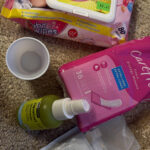
-
Gather these ahead.
-
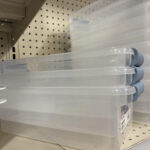
-
Keep organized
-
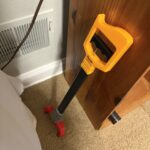
-
Kid’s reacher
Buy disposable items you will need:
Examples are bathing and child body wipes. Clothes easy to put on and off. (i.e. wide legged pants and button-down shirts.) Use Goodwill or other resale shops to save money. Then, donate back when you no longer need these.
Declutter.
Remove unused items and trip hazards. (rugs, objects, pet toys) Get ice and heat packs ready. Check with doctor for when to start using. To avoid caffeine headache, wean off caffeine. Drink healthy liquids and use the restroom. (hot/warm water or tea. Juices. Milk)
Buy and Plug in night lights
Locate the strategic places to help with navigation.
Arrange food for several weeks.
A “Meal Train” type system helps! Schedule for every few days. Most people bring more food than for one meal. Also, you may have less appetite for a few weeks so one meal may go a ways. We found extending this courtesy longer than we initially thought, helped. If someone gives a gift card through an online site, ask them to alert you so you can find it. Look in spam. Otherwise, it will get lost.
Keep a list of people who offer to and have helped. Send notes of thanks. Ecards, real cards, texts.
Gather “entertainment” items:
Realize you may be disinterested initially. When people offer items ask if they want them back or not. If so, be sure they label them so you can return them. Small puzzles, word-type puzzles, books (audio/hard copy).
Make a document of how you like things done.
Ask people to help keep the house tidy. Include the location of cleaning items, bedding, laundry, temperature control, food, dishes/pots/pans. Contacts.
Ask another person, as well as your caregiver, to come to pre-surgery visits with you. The flood of information is overwhelming. These people can listen and understand more than you can.
Personal Care Just Before Surgery
Either wash or have you hair washed and styled immediately before surgery. I could run a brush through my hair and felt half decent for several days. Then I could use the dry wash product on my hair a few times before i was ready to tackle washing hair in the shower. Also, clip your toenails and fingernails right before. I was not to bend beyond 90 degrees – sitting L shape – for at least eight weeks. Toenails can grow really long in that time!
Practice:
When we are more present and aware, we can be more mindful, do meditation, and feel appreciations. Take a few minutes each day to say, Thank you. Breathe deeply. Smile. Release muscles. I programmed HeartMath’s Inner Balance on my phone to chime three times a day. I would pause and breathe in regenerative feelings like calm and appreciation. I’d smile as I remembered how good the sun felt on my face when sitting in the nook; the sound of robins returning; our chickens laying fresh eggs; the song birds at the feeder; a fun note from a friend; a friend’s kindness.
You have prepared yourself and those close to you. Know all will be well.
by Winding Pathways | Jan 9, 2025 | Labyrinths, Reflections/Profiles, Ruminations
Winter and Spring
Each January I post about visiting labyrinths during the years. Below are Labyrints 2024 that we visited.
January kicked off the year with a fun and moderately mild weather visit to a childhood friend and her family who now live in Wisconsin. We walked in Wauwatosa’s Hartung Park, where the community has installed an engaging labyrinth for all ages to enjoy. Watch as this youngster romped along the path looking for the icicle fairies who feed the Voogans. These are imaginary creatures, tall as a house, who live in the park.
Prairiewoods Spirituality Center in Hiawatha, IA, hosted a series of cross-quarter date labyrinth walks. The first, known in various cultures as Imbolc, St. Bridgit’s Day, or Candlemas, marks the halfway point between the winter solstice and the vernal equinox.
Early April we trekked to Arkansas for the total eclipse and to catch up with Veriditas and Outdoor Writer friends. The paved labyrinth at Hendrix College is special to Twylla Alexander who hosts special walks with her family in the holiday season.
-
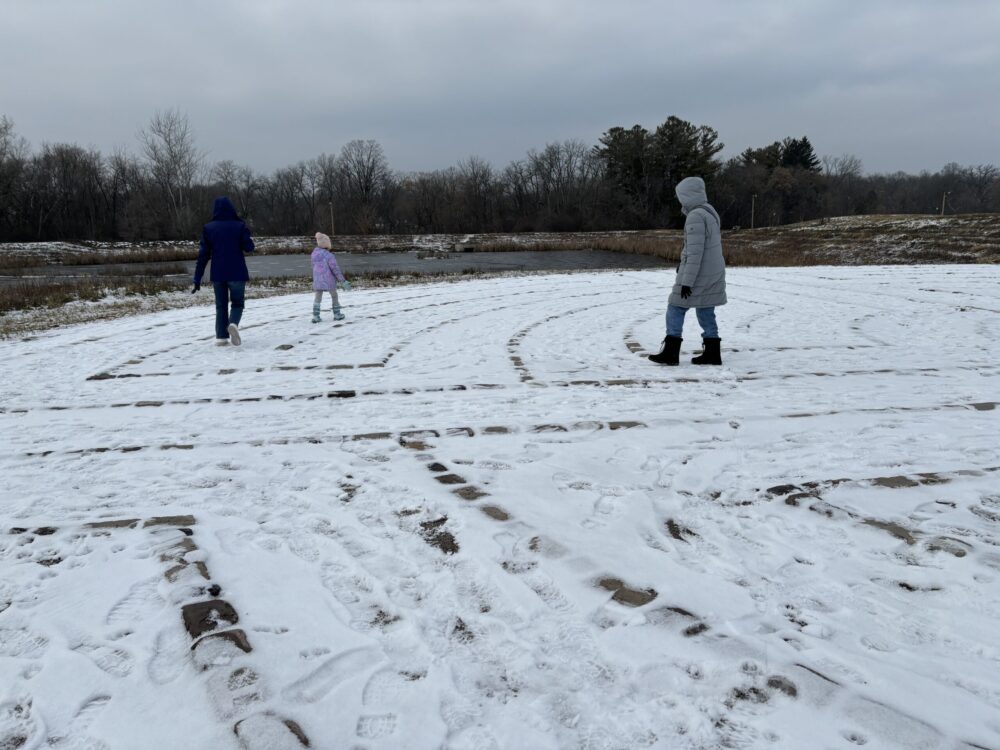
-
Hartung Park, Wauwatosa, WI
-

-
St. Bridgit’s Day Walk
-
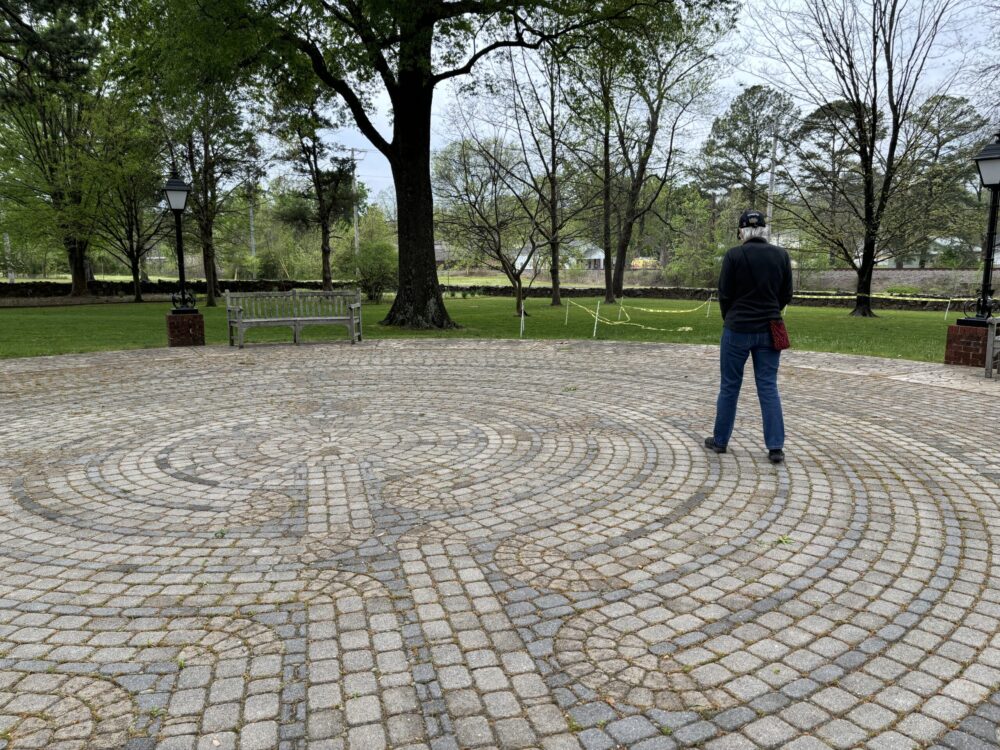
-
Twylla Alexander walks the Hendrix College labyrinth, Conway, AR
Spring to Summer
One of my joys is to periodically help host handheld labyrinth walks through Veriditas. Each Friday since March 2020, Veriditas has hosted free walks. As many as 100+ have attended worldwide from at least four different continents. Remember this involves navigating time zones and considering seasonal differences in the Southern and Northern Hemispheres!
December 2023 when I guided a “finger” walk, the North Polar Bear who comes out annually with the Father Christmas stories, jumped up and created quite a stir! Viewers grabbed their Teddy Bears and other “stuffies” and joined in the chaos. I could hardly contain anyone! Soooooo, North Polar Bear set the idea of play in the labyrinth.
This gave rise to the yoga class participants from the Nassif Community Cancer Center coming to the Phoenix Harmony Labyrinth. We’ve walked before and enjoyed a potluck. This year they gamely joined in what is known as the Appleton Dance which works well on a dual-entry five-circuit labyrinth. Laughter and clapping drifted over the yard.
Sometimes a pilgrim quietly arrives. In high summer, a Gazette reporter slowly walked the path, took photos, and sat on the bench in the shade of the birch.
Evening is always a pleasant time to walk, especially with a setting moon to frame the trees. I do miss the sounds of insects which have been diminishing over the years as loss of habitat and increase in sprays take their toll. Insects are critical for earth and human health.
-
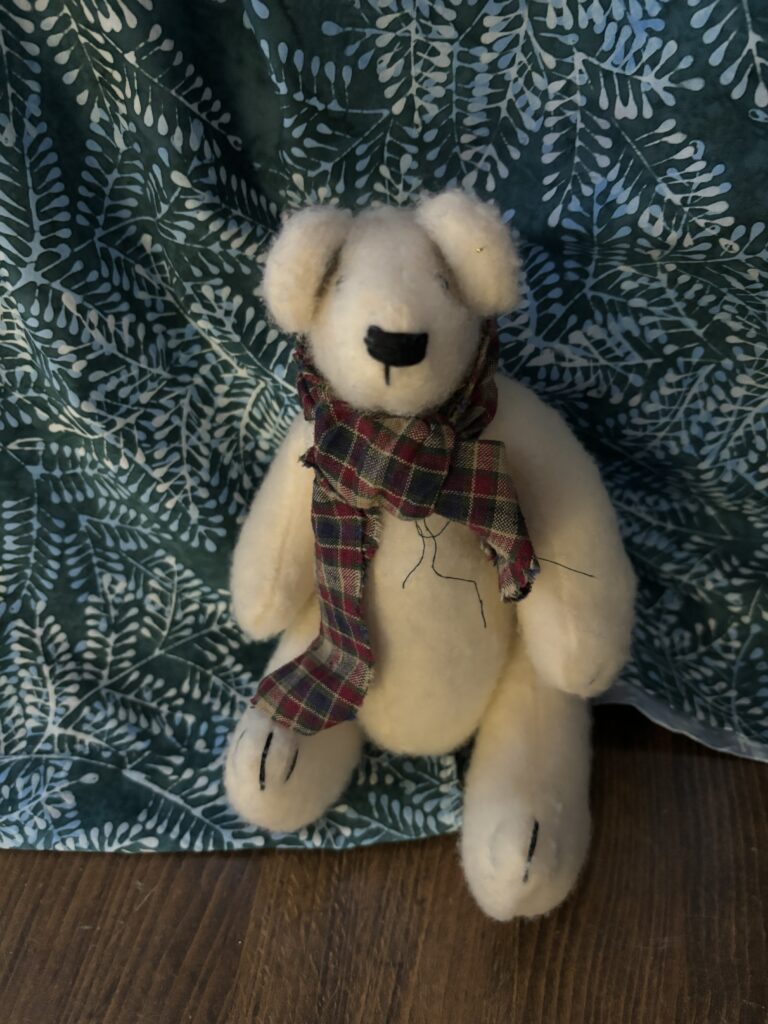
-
The North Polar Bear inspired being Playful in the labyrinth
-
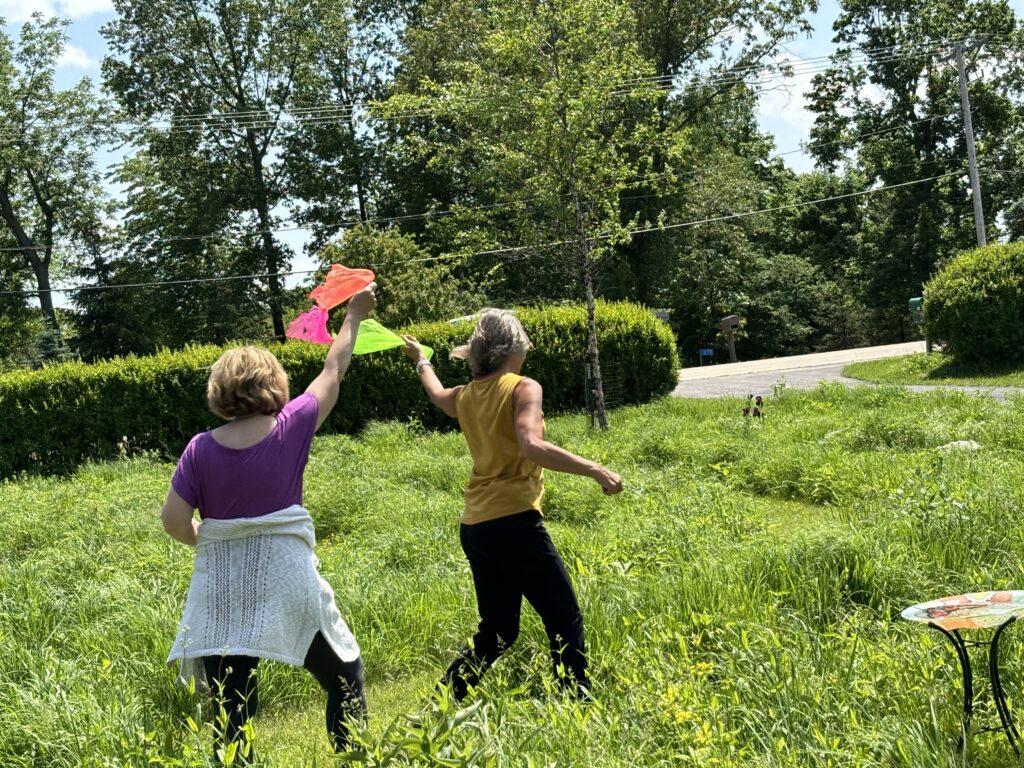
-
Adults playing in labyrinth
-
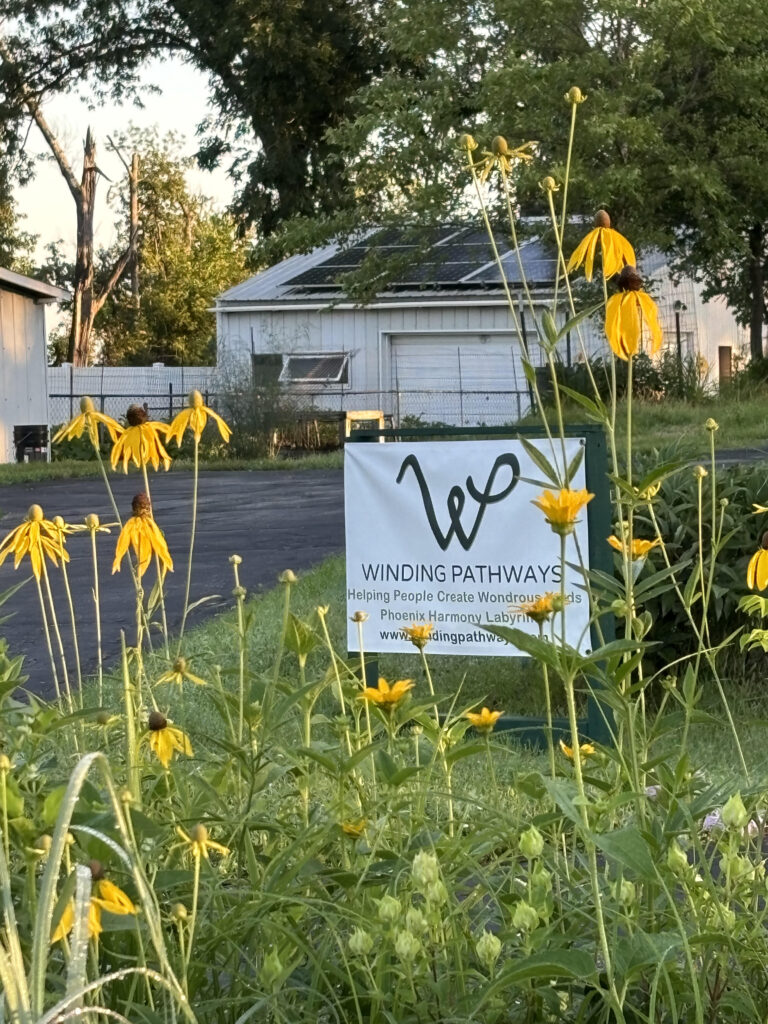
-
Winding Pathways
-
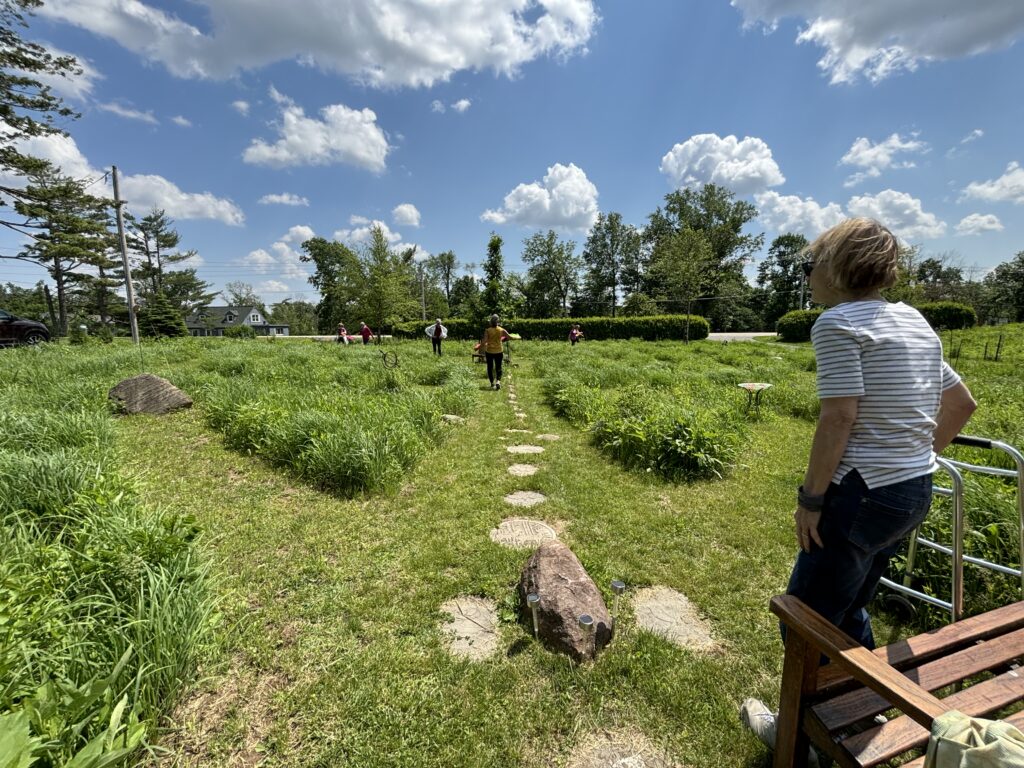
-
Holding space.
-
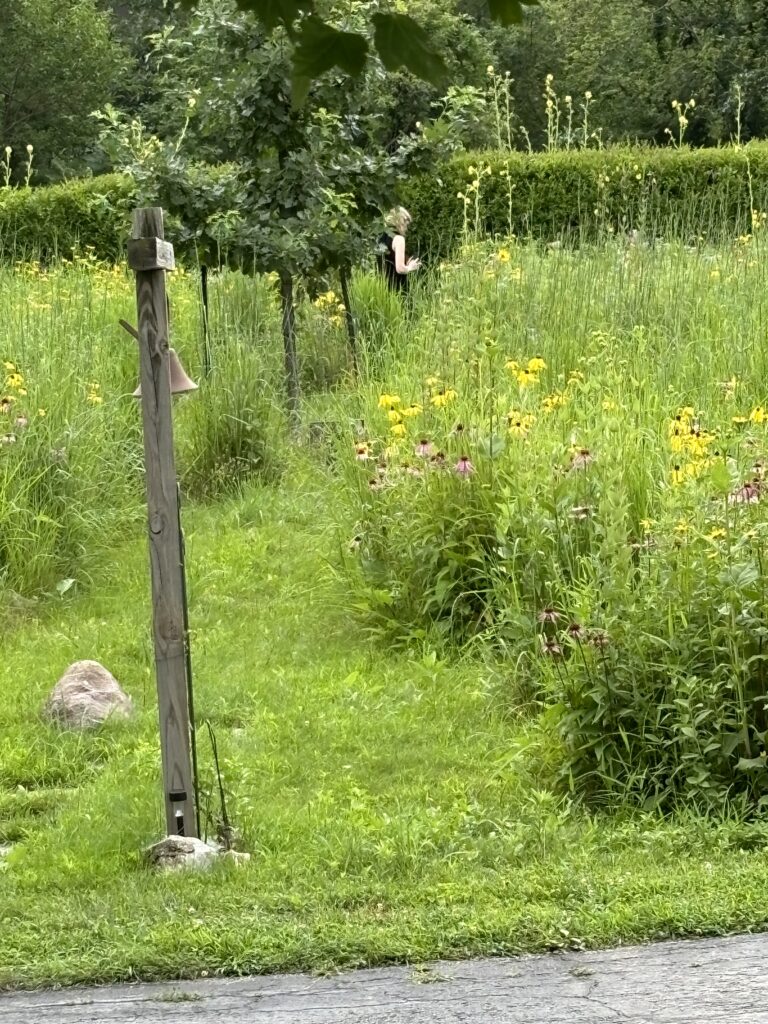
-
Summer charm
-

-
Evening walk
Autumn to Winter
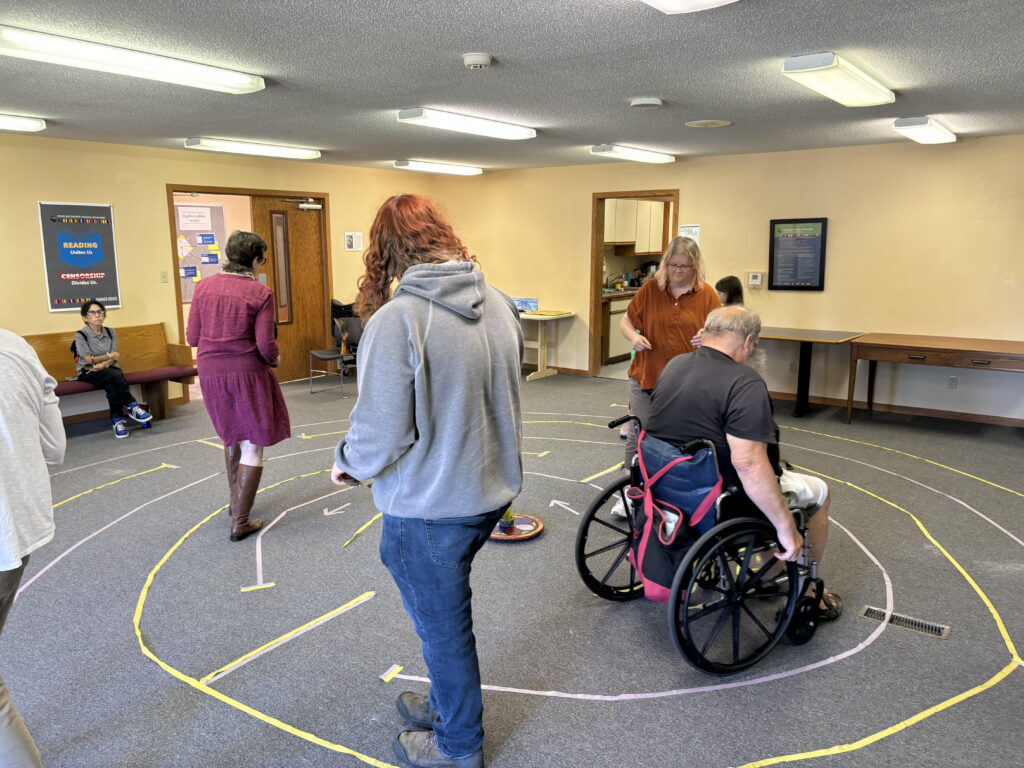
Indoor labyrinth
Our minister, the Reverend Carin Bringelson creates unique services engaging a variety of congregants. One September service featured several stops where members engaged in physical activity. This included a three-circuit processional walk that a friend, Tom, helped lay down on the Ely Room floor. We invited people to walk once to get the feel and then again more thoughtfully. People enjoyed the experience and shared their takes on the various stops after service.
Finding labyrinths 2024 was slower this year because of different types of activities.
In September, Rich and I visited Lincoln, NE. Part of our adventure before his bicycle ride was finding labyrinths. It was mostly futile. One was a pretty walking area but not a labyrinth. The other was tucked away from where anyone would choose to walk and behind an area of construction. The path leading to a pretty paved labyrinth was overgrown and uninviting. Needs love. One we simply could not find.
A similar experience in Charles City, IA, which did have a lovely paved labyrinth next to the river revealed that is was gone. To everything, there is a season.
October found me in northern California outside Yosemite at a labyrinth conference. The Gathering’s theme was “Awe and Inspiration.” Indeed the day tour into Yosemite, although brief, yielded a sense of the grandeur of this sacred place so loved by John Muir and before him, the Indigenous people who lived there.
We are not always filled with Awe and Inspiration, so what do we do when things are tough? We walk through “Ordinary” time. Not meaning dull, but time of preparation. Although connected to the liturgical sense, we all experience “Ordinary” time and Awe and Inspiration. That was the theme of my talk. How inspiring to hear people’s experiences and how they use the labyrinth to help them keep balance and return to a sense of appreciation and inspiration.
I’ve captured images of our trip below.
-

-
Sacred Space
-

-
Enjoying the climbers on El Cap. Can you spot them? In the Heart of El Capitan
-
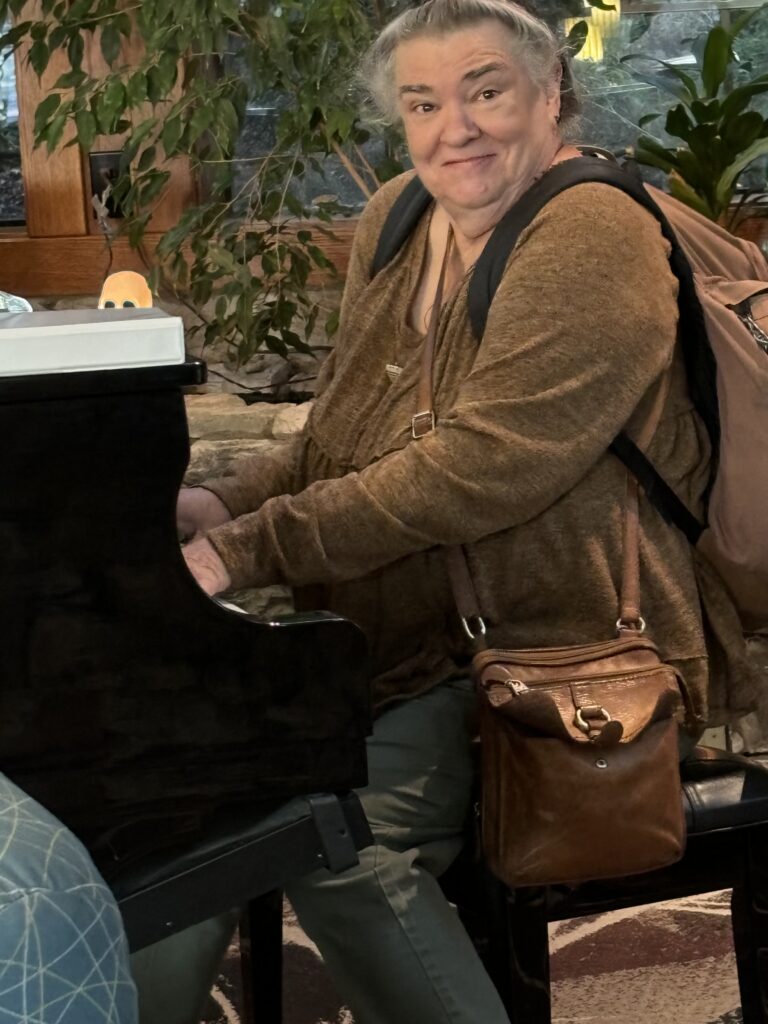
-
Beth Sharing music
-
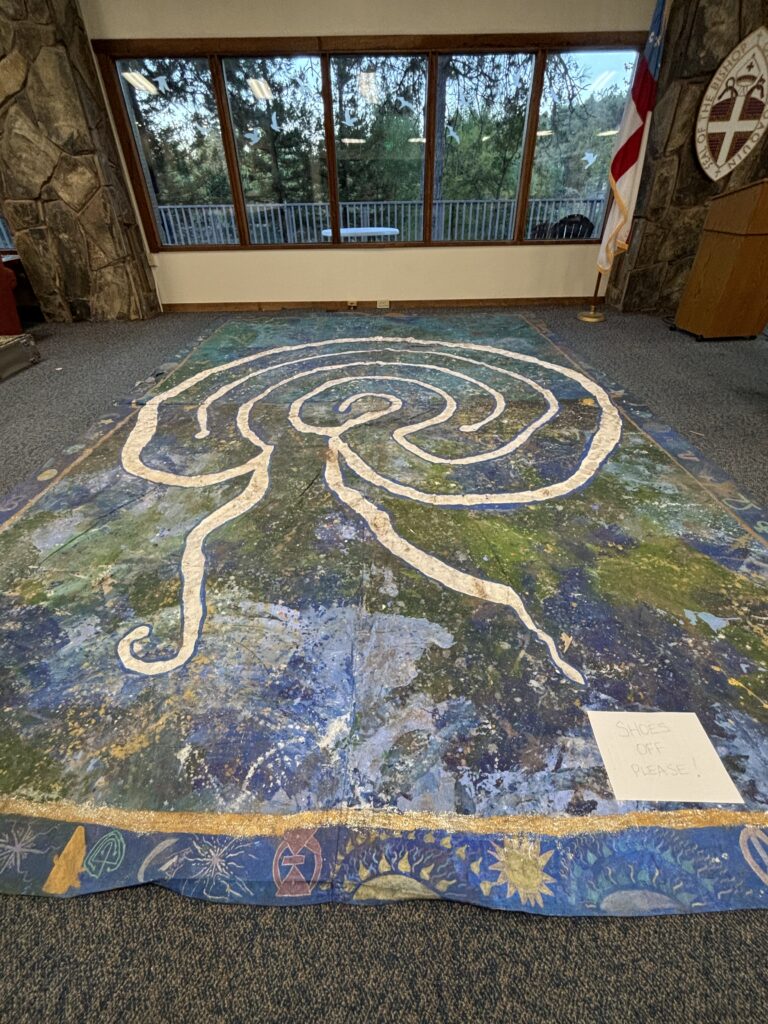
-
Unique
-
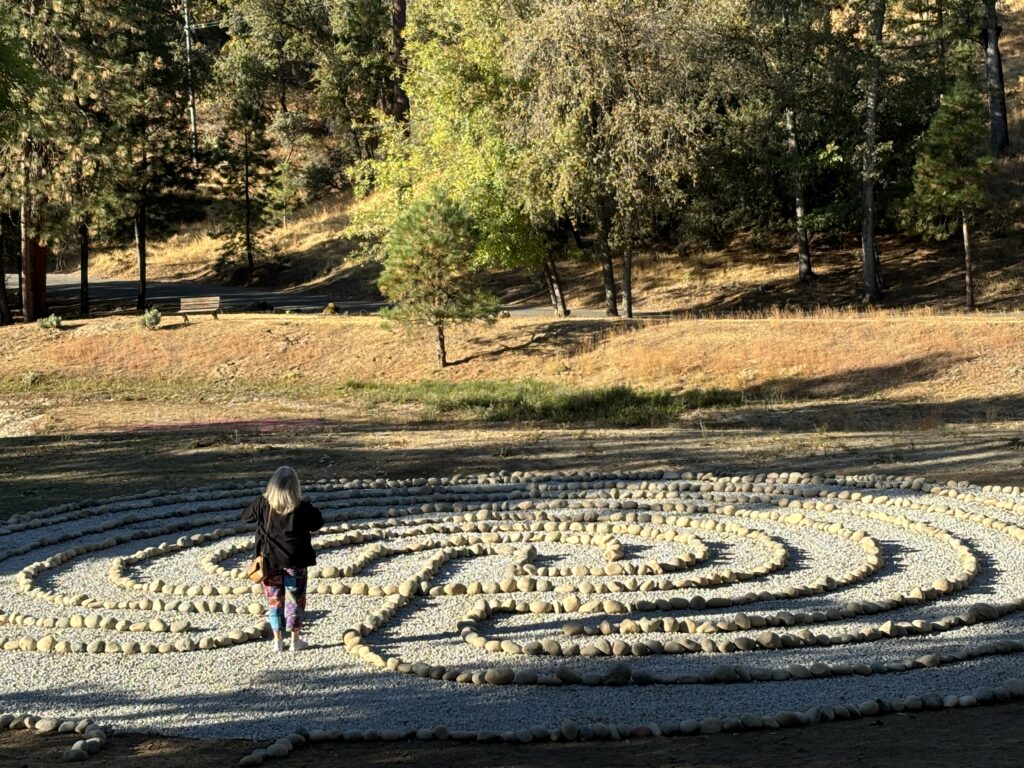
-
New labyrinth
-
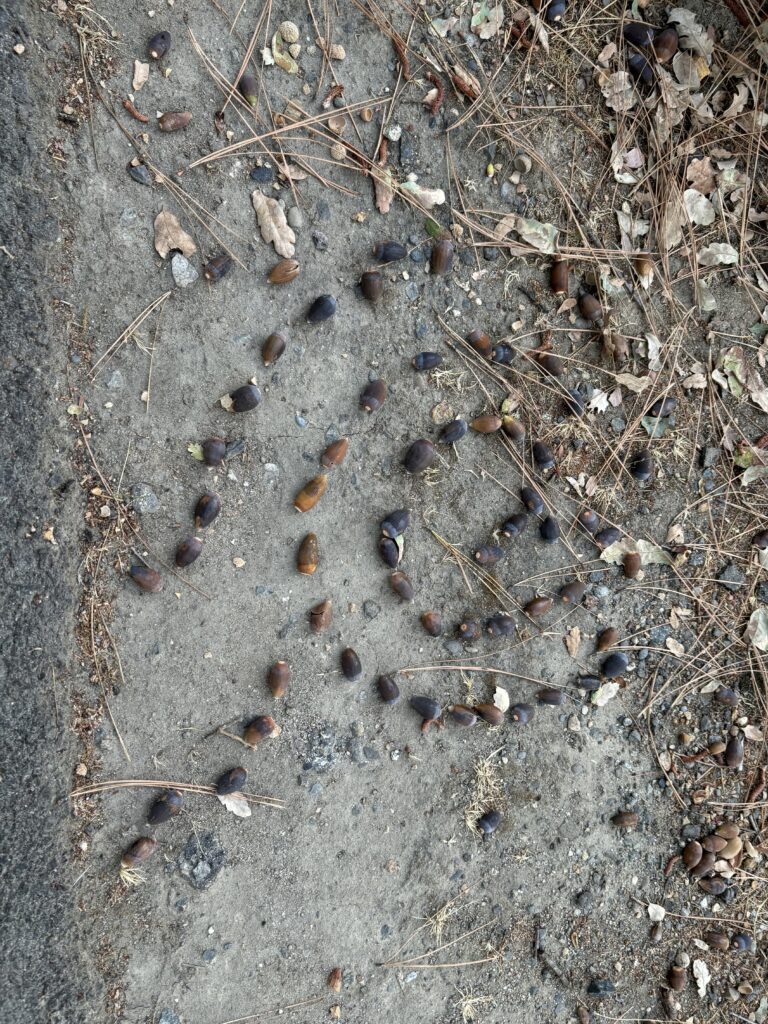
-
Labyrinths everywhere
Finally, we approach winter with our final yard task of the year. Burning the prairie and the labyrinth! My favorite activity. Now, I can walk the path, note the ashen borders, and know that come spring the Phoenix Harmony Labyrinth will emerge even more robust than ever.
-
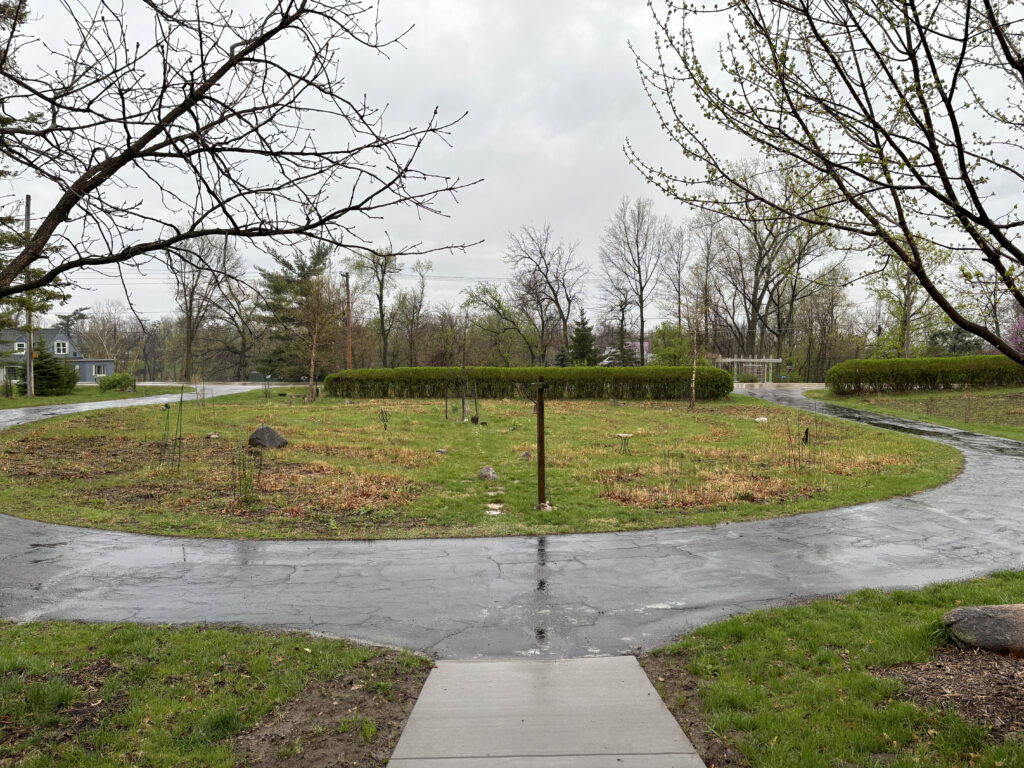
-
Early Spring from porch
-
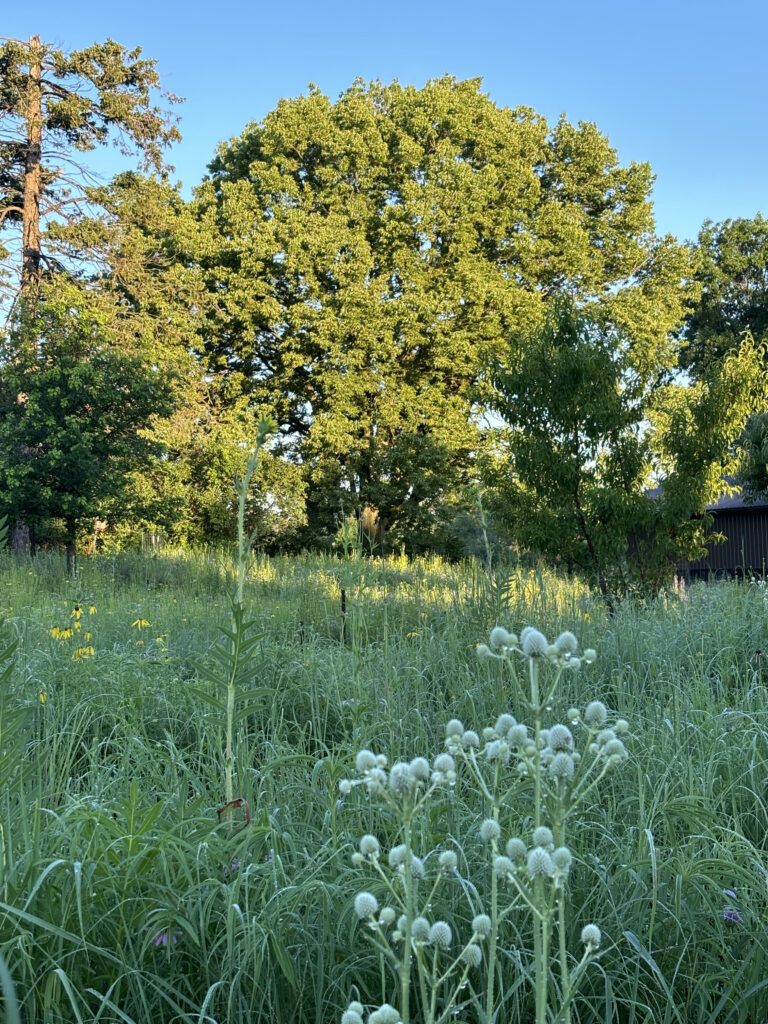
-
Summer fullness
-

-
Fall color
Burning and winter quiet.
-
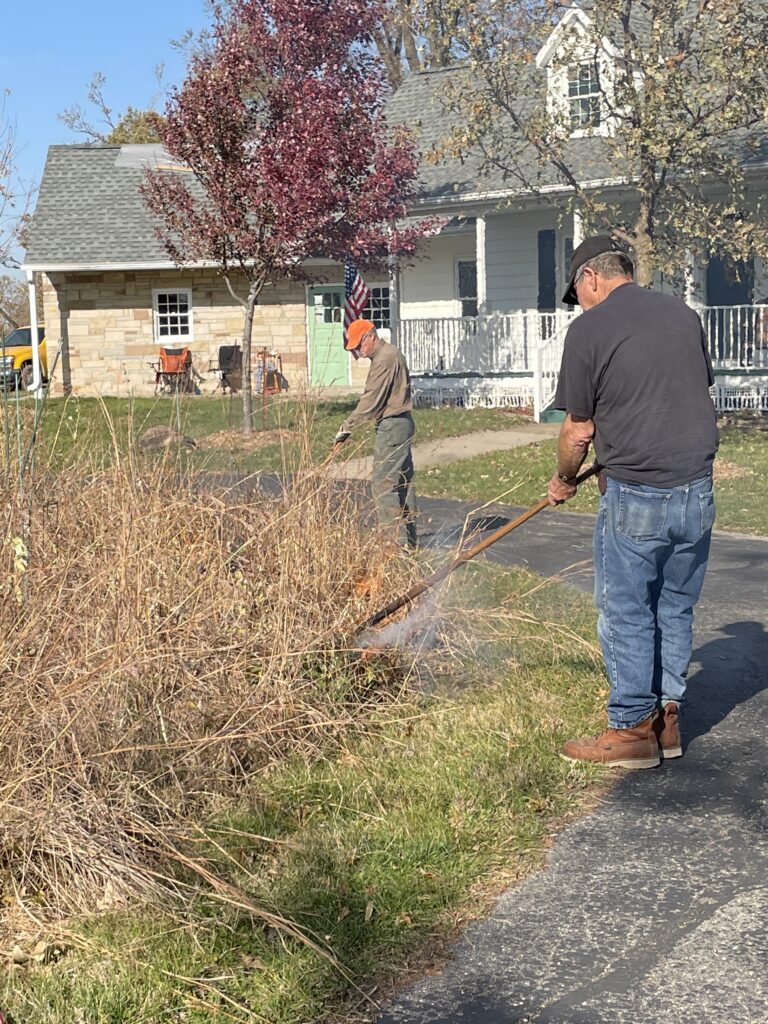
-
Moving fire into new fuel.
-
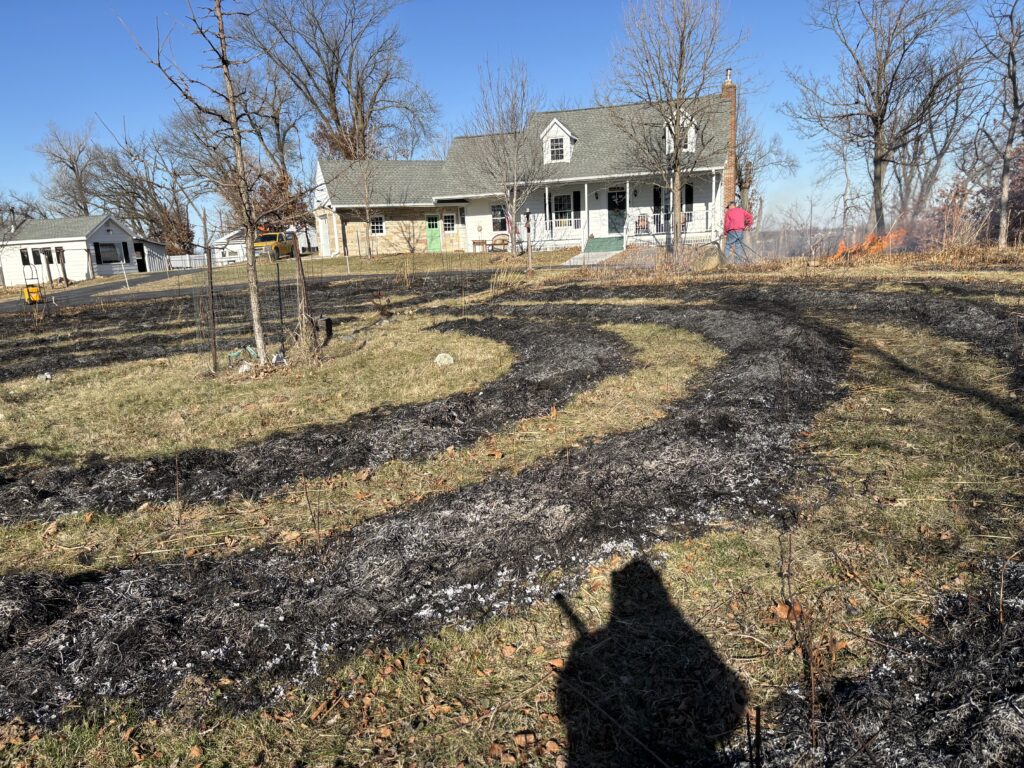
-
Rake in hand
-
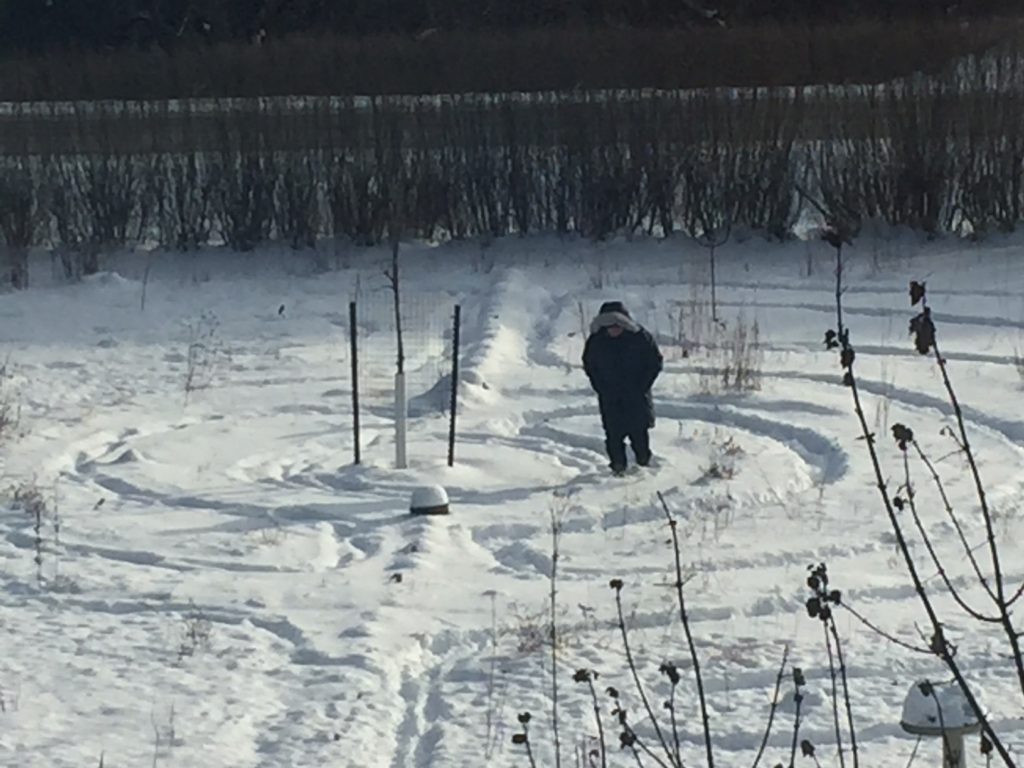
-
Walking in winter
by Winding Pathways | Oct 17, 2024 | Ruminations
Routine Visit Leads to Cataract Surgery
A midsummer routine checkup by my ophthalmologist, Dr. Brian Privett, changed my vision – for the better.
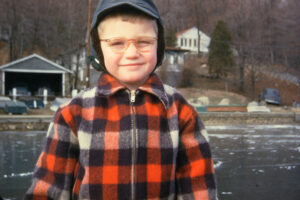
Wearing thick glasses was a way of life.
During most of my life, I have suffered from extreme myopia. I could see things inches in front of my eyes clearly but anything further away was only a blur. I wore thick glasses for years.
That changed nearly 20 years ago when I had PRK eye surgery. Similar to the better-known Lasik, a skilled eye surgeon and amazing technology altered my corneas. The impact was dramatic. For the first time, I could see distant objects clearly without glasses. And, I had peripheral vision not possible with my old glasses.
My vision remained outstanding, except for increasingly needing reading glasses for close work. This is a condition called presbyopia that virtually everyone experiences as they age.
Cataracts

Thick glasses
During my recent summer visit, Dr. Privett noted that my vision, although good, was somewhat diminished by growing cataracts. Most everyone also experiences them as they age. Cataracts are a stealth condition. They grow so slowly that it’s hard to detect a loss of vision. All I was aware of was increasing difficulty driving at night. Oncoming headlights and streetlights were surrounded by fog.
I wasn’t overly bothered and could have delayed cataract surgery, but during the visit Dr. Privett said, “Your cataracts aren’t too bad, but they will get worse and sooner or later you’ll need to have them removed and a new lens inserted. Having surgery sooner is a wise strategy as you’ll have more years to enjoy good vision and it’s often better to do surgery when a person is younger,”.
Decisions
That sparked an instant decision. I immediately scheduled surgery. Dr. Privett removed the cataract from my right eye and inserted a Vivity lens on July 31. He did the same procedure on my left eye a week later. Then followed about a month of eye drops.
It’s taken time to get accustomed to my “new” eyes. Perhaps the most striking experience was driving through Cedar Rapids on a dark night about a month after surgery. I was astounded at how clear the lights were. My night vision was excellent.
Adjustments
Cataract surgery isn’t perfect. I still need close-up reading glasses and my eyes are light sensitive. So, I carry and use readers and sunglasses depending on where I am and what I’m doing. In early October I ordered new glasses that include progressive lenses that should enable me to read and transitions that darken when I’m out in the sun and lighten inside the house. I’m expecting my new glasses to provide outstanding vision in many situations.
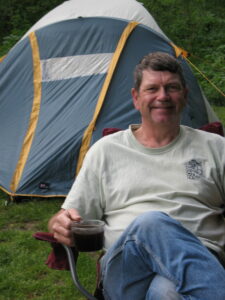
Enjoying life without glasses.
Modern eye surgery is miraculous and is the result of excellent medical research, advanced technology, and skilled surgeons like Dr. Privett. I encourage everyone to get periodic vision examinations and to follow the advice of their ophthalmologist.
Information
Many websites provide cataract information. One of my favorites is the Mayo Clinic. Dr. Privett and other ophthalmologists are affiliated with the Iowa Eye Center. The American Academy of Ophthalmology website helps people living anywhere to find a skilled eye physician near where they live.
